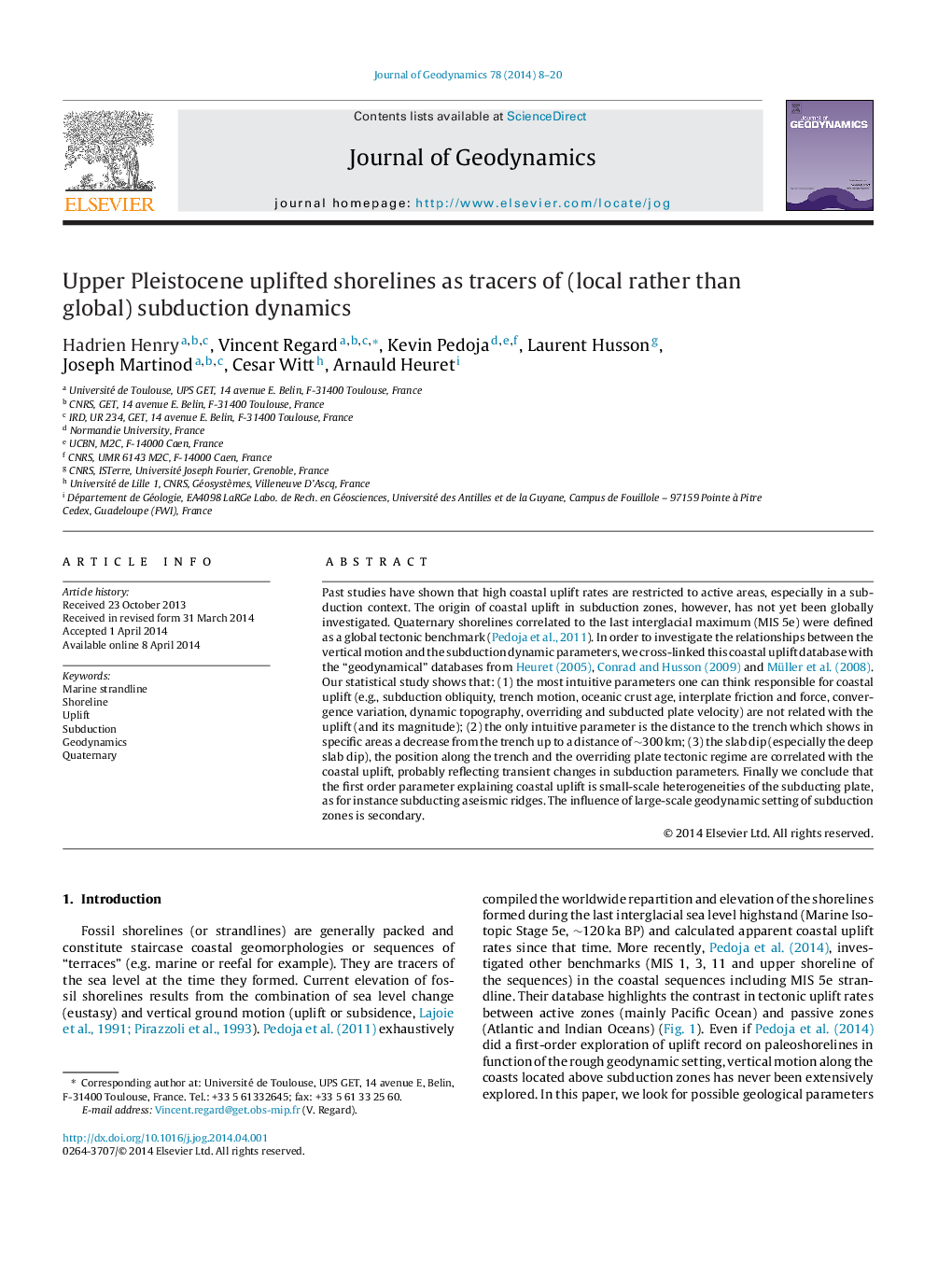| Article ID | Journal | Published Year | Pages | File Type |
|---|---|---|---|---|
| 4688089 | Journal of Geodynamics | 2014 | 13 Pages |
•Large-scale geodynamics only explain first order coastal uplift rates.•Uplift is localized over asperities of the subducting plate.•Uplift could be related to transient changes in subduction parameters.•Rapid uplift is restricted to the area <300 km from the trench (forearc).•Forearc and plate interiors respond differently.
Past studies have shown that high coastal uplift rates are restricted to active areas, especially in a subduction context. The origin of coastal uplift in subduction zones, however, has not yet been globally investigated. Quaternary shorelines correlated to the last interglacial maximum (MIS 5e) were defined as a global tectonic benchmark (Pedoja et al., 2011). In order to investigate the relationships between the vertical motion and the subduction dynamic parameters, we cross-linked this coastal uplift database with the “geodynamical” databases from Heuret (2005), Conrad and Husson (2009) and Müller et al. (2008). Our statistical study shows that: (1) the most intuitive parameters one can think responsible for coastal uplift (e.g., subduction obliquity, trench motion, oceanic crust age, interplate friction and force, convergence variation, dynamic topography, overriding and subducted plate velocity) are not related with the uplift (and its magnitude); (2) the only intuitive parameter is the distance to the trench which shows in specific areas a decrease from the trench up to a distance of ∼300 km; (3) the slab dip (especially the deep slab dip), the position along the trench and the overriding plate tectonic regime are correlated with the coastal uplift, probably reflecting transient changes in subduction parameters. Finally we conclude that the first order parameter explaining coastal uplift is small-scale heterogeneities of the subducting plate, as for instance subducting aseismic ridges. The influence of large-scale geodynamic setting of subduction zones is secondary.
